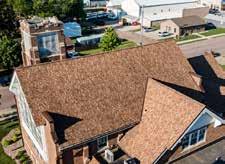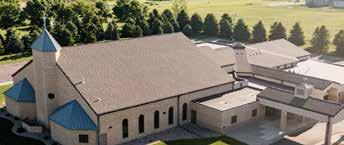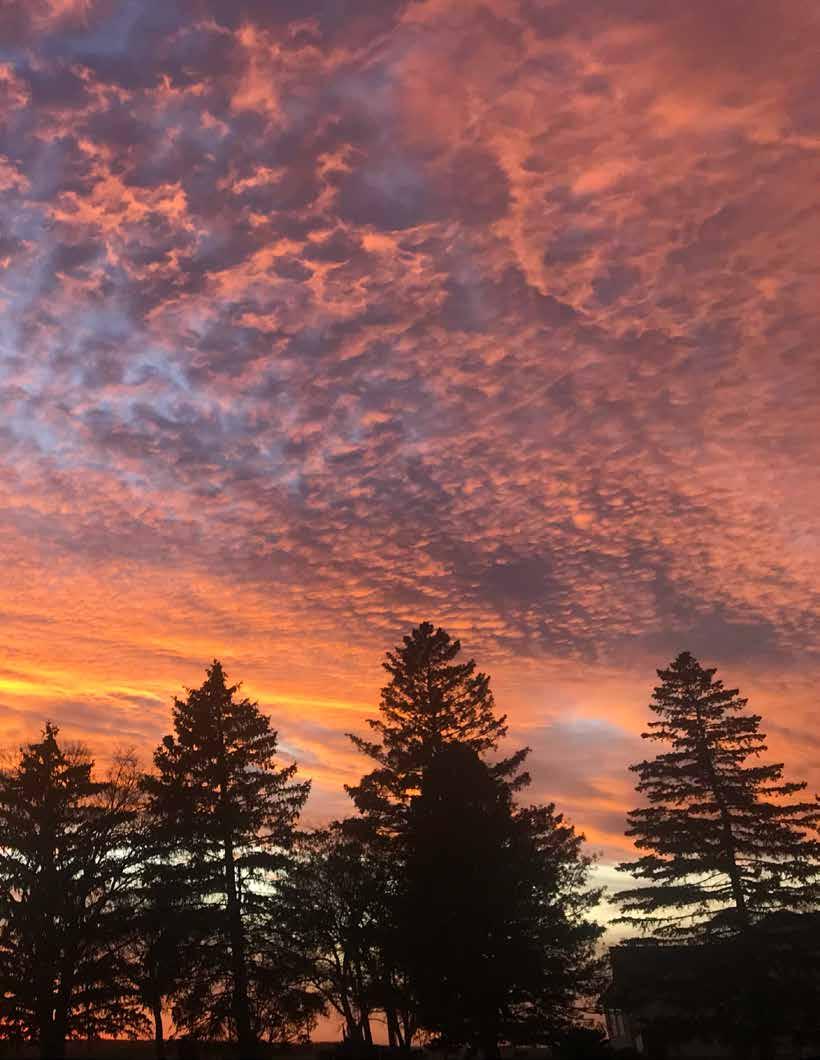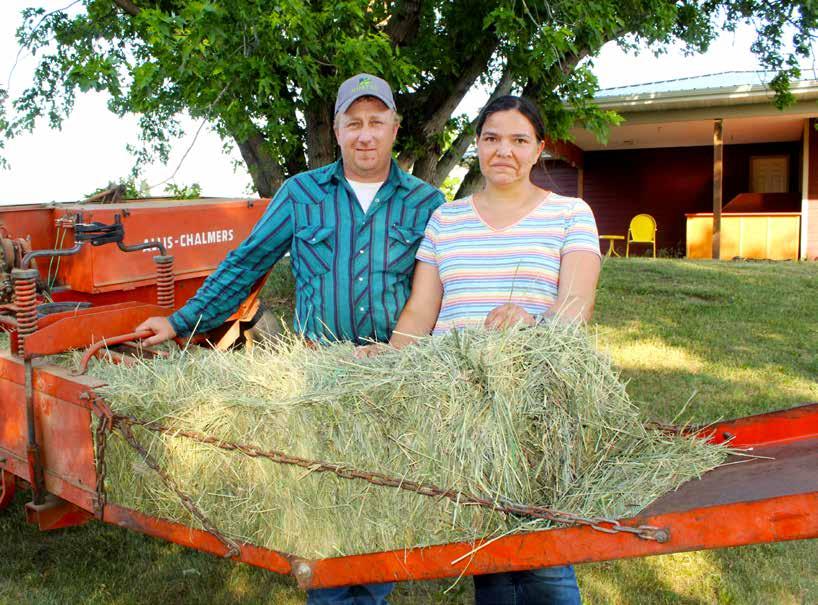
4 minute read
Hofer Roofing
the roof beams were transported by steamboat to Yankton and then hauled over land to the site.
The interior of the house is divided into four rooms of approximately equal size. The southwest room has a traditional ladder stair to the loft and a trap door over the root cellar (the trap door was permanently closed in 1948). In the west room, the lightblue walls have a continuous stenciled frieze, a common decorative style at the time of construction. The house has a half cellar which measures 12 x 17 feet. Northwest of the house, Gottlieb built a stone corral measuring 166 x 110 feet for his livestock. Parts of the stone fence are still visible.
Advertisement
Owen and his son have continued their vigil of preservation of the house, which is a labor intensive effort. In addition to the roof added in 1999, they’ve reinforced the structure by applying concrete to the original mud mortar. Two years ago, they spent a lot of time repairing one of the corners which was falling into disrepair. “It’s a heck of a job to try to get concrete to stick to the mud,” Owen said.
After the second generation of Sterns departed and before Owen’s father purchased the property, the isolated house proved to be a refuge for victims of the Great Depression and the Dust Bowl. “I don’t know how many people lived here in the ‘30s,” Owen said. “But most of them were people who lost their farm and had no place to go. They moved in here for nothing. Back then, when you were broke, you were really in trouble. There was no government help.” In fact, Owen’s uncle moved there because he’d lost his health and couldn’t get a job. “When my uncle lived here, they’d try to stock up on as much food as they could in the fall.” Most of the time in the winter they had to leave their car at a neighbor’s farm quite some distance away because cars of the day couldn’t make it through the snow to the remote location. There has never been electricity or telephone lines run to the house.
In addition to preserving the stone-and-sod house, the family marked out the borders of a nearby cemetery on a ridge which had been forgotten by everyone except Owen and his family. He’s also held on to his ability to speak German, “but not that well anymore because I’ve got no one to speak it with. When I started grade school, I had to quickly learn English before I could go. Lucky for me, the teacher also spoke German, so if I got stuck she’d help me out.”
Owen’s uncle had artistic skills and left behind this painting of a deer on the walls when he lived there in the 1940s.
FOR RELIABLE ROOF REPAIR AND INSTALLATION, TRUST THE EXPERTS

James Hofer, Owner/ Founder

We specialize in residential, commercial, and church roof repair and installation for over 25 years. You can trust our dedicated team to provide quality craftsmanship with premium materials for projects big and small.
For estimate requests, text STORM to 72727 or visit hoferroofingsd.com.
LICENSED, BONDED, AND INSURED Over 25 Years Experience
hoferroofingsd.com 605-610-1899

TURNER COUNTY SUNSET. PHOTO BY MARK MILLER.

Justin and Casey Wenzlaff farm south of Humboldt. They’re pictured with an early 1960s Allis Chalmers 303 baler.

LESSONS IN FARMING, EGG PRODUCTION, BUGS AND BUTTERFLIES – AND WHERE THE SILVERWARE GOES
By Bob Fitch
The laughs come easy at Justin and Casey Wenzlaff’s home. For example, Justin responds quickly to the question of defining a good life: “Well, in the words of Tom T. Hall, ‘It’s faster horses, younger women, older whiskey, and more money.’”
Between the lines, though, it’s not hard to see Justin and Casey’s highest priority is securing quality life experiences for their two sons on the family’s corn, soybean and alfalfa farm south of Humboldt. Their sons are Owen, 9, and Abel, 3.
“I’m glad we farm and I’m glad there’s a chance for our boys to be a part of it,” Justin said. “We take farming seriously, but tonight we were baling the road ditch with our old, small square baler so they can see how it was done. I enjoy that kind of thing.”
He also likes to create little side businesses for the boys. Last summer’s new enterprise was sweet corn. One night they swung through town with a pickup load. “Everyone was sitting









